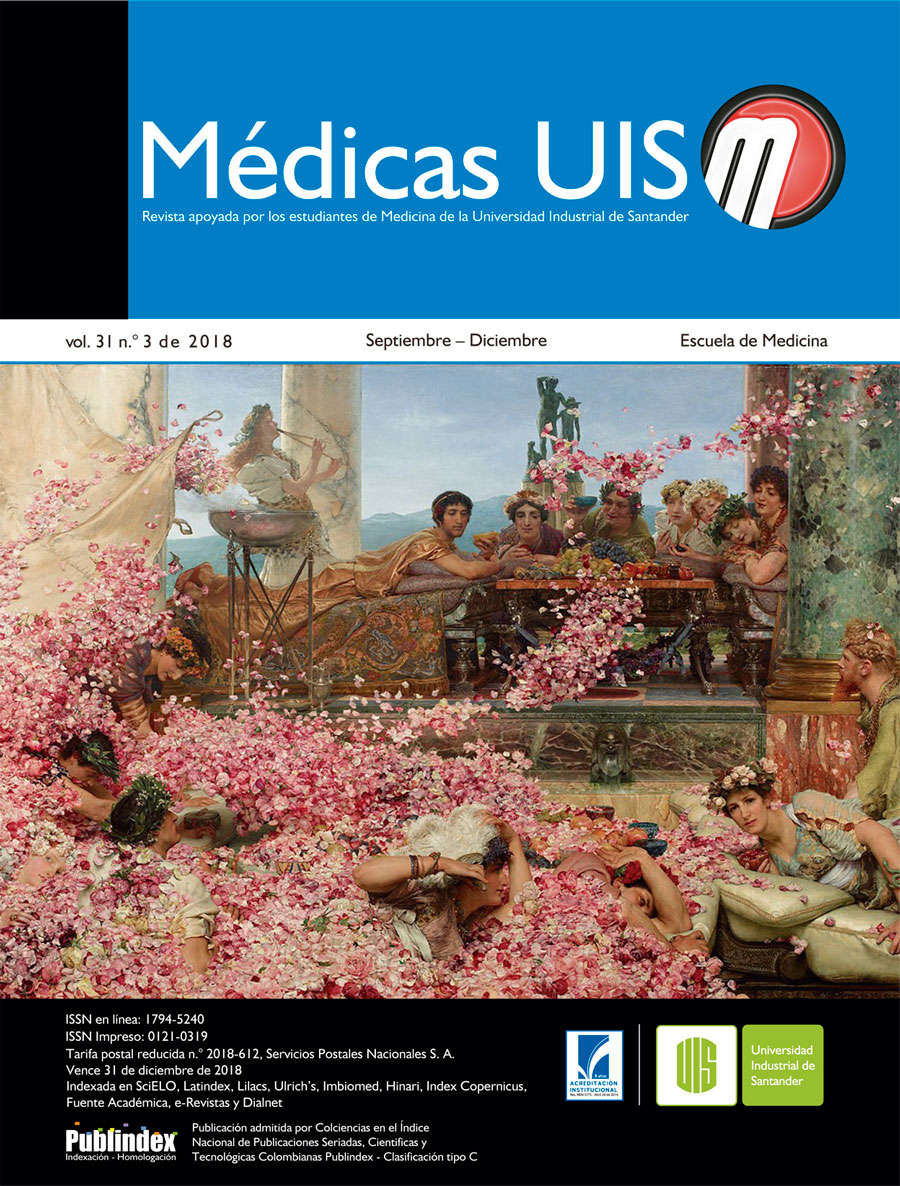Abstract
Introduction: there is a growing number of acute coronary syndromes in young patients without obstructive coronary artery disease. There are no published studies from our region, so we performed this study. Objectives: to evaluate demographic and clinical characteristics, risk
factors and angiography characteristics of patients of 18-50 years of age presenting acute coronary syndromes and in whom no obstructive coronary artery disease is detected. Methodology: this is a retrospective, cross sectional study. Clinical charts were evaluated searching for patients between 18 and 50 years of age, with acute coronary syndrome, in whom a coronary angiography was performed. Results: of 128 young adults with acute coronary syndrome, 50 of them had no obstructive coronary artery disease. Male gender predominated (74%),with a median age of 43 years. The most common symptom was typical chest pain (88%), with a median time to the first medical contact of six hours. The most common risk factor was excess of weight (57,7%). 34% of patients had ST segment elevation. Seven of the patients had
coronary thrombosis without obstructive lesions. Median time to discharge was two days. Discussion: The high prevalence of risk factors, mainly excess weight, brings attention into the opportunity for primary prevention interventions. Conclusions: The main risk factor was
excess weight. Clinical course at presentation and during the hospitalization was benign, since there were few complications and no early mortality. More studies are required with a prospective design for assessing long term clinical behavior. MÉD.UIS. 2018;31(3):13-19.
References
2. Observatorio Nacional de Salud. Instituto Nacional de Salud. Carga de enfermedad por Enfermedades Crónicas No Transmisibles y Discapacidad en Colombia [Internet]. Bogotá, Colombia. 2015. DOI: 10.13140/RG.2.1.1618.1523
3. Murray CJL, Barber RM, Foreman KJ, Ozgoren AA, Abd-Allah F, Abera SF, et al. Global, regional, and national disability-adjusted life years (DALYs) for 306 diseases and injuries and healthy life expectancy (HALE) for 188 countries, 1990–2013: quantifying the epidemiological transition. Lancet. 2015;386(10009):2145-191.
4. Nabel EG, Braunwald E. A Tale of Coronary Artery Disease and Myocardial Infarction. N Engl J Med. 2012;366(1):54-63.
5. Thygesen K, Alpert JS, Jaffe AS, Simoons ML, Chaitman BR, White HD, et al. Third universal definition of myocardial infarction. Eur Heart J. 2012;33(20):2551-67.
6. Pasupathy S, Tavella R, Beltrame JF. Myocardial Infarction With Nonobstructive Coronary Arteries (MINOCA). Circulation. 2017;135(16):1490-3.
7. Patel MR, Chen AY, Peterson ED, Newby LK, Pollack C V., Brindis RG, et al. Prevalence, predictors, and outcomes of patients with non-ST-segment elevation myocardial infarction and insignificant coronary artery disease: Results from the Can Rapid risk stratification of Unstable angina patients Suppress ADverse outcomes with Early. Am Heart J. 2006;152(4):641-7.
8. Marín F, Ospina LF. Infarto agudo del miocardio en adultos jóvenes menores de 45 años. Rev Col Cardiol. 2004;11(4):193-204.
9. Kowal, Paul. Harare Report of a workshop on creating a Minimum Data Set (MDS) for research, policy and action on ageing and the aged in Africa. 2000.
10. Ibanez B, James S, Agewall S, Antunes MJ, Bucciarelli-Ducci C, Bueno H, et al. 2017 ESC Guidelines for the management of acute myocardial infarction in patients presenting with ST-segment elevation. Eur Heart J. 2018;39(2):119-77.
11. Crea F, Camici PG, Bairey Merz CN. Coronary microvascular dysfunction: an update. Eur Heart J. 2014;35(17):1101-11.
12. Lindahl B, Baron T, Erlinge D, Hadziosmanovic N, Nordenskjöld A, Gard A, et al. Medical Therapy for Secondary Prevention and Long-Term Outcome in Patients with Myocardial Infarction with Nonobstructive Coronary Artery Disease. Circulation. 2017;135(16):1481-9.
13. Gupta A, Wang Y, Spertus JA, Geda M, Lorenze N, Nkonde-Price C, et al. Trends in acute myocardial infarction in young patients and differences by sex and race, 2001 to 2010. J Am Coll Cardiol. 2014;64(4):337-45.
14. Hindieh W, Pilote L, Cheema A, Al-Lawati H, Labos C, Dufresne L, et al. Association Between Family History, a Genetic Risk Score, and Severity of Coronary Artery Disease in Patients With Premature Acute Coronary Syndromes. Arterioscler Thromb Vasc Biol. 2016;36(6):1286-92.
15. Godoy AL. Infarto de miocardio en pacientes menores de 50 años. Realidad Peruana. Rev Peru Cardiol. 2012;38(3):147-52.
16. Santos Medina M, Valdivia Álvarez E, Ojeda Riquenes Y, Pupo Ceregido ÁE. Factores de riesgo en el infarto agudo del miocardio en menores de 50 años en el Hospital Ernesto Guevara. 2007- 2009. Rev Cubana Cardiol Cir Cardiovasc. 2012;18(3):149-52.
17. Valdés-Martín A, Rivas-Estany E, Martínez-Benítez P, Chipi-Rodríguez Y, Reyes-Navia G, Echevarría-Sifontes LA. Caracterización del síndrome coronario agudo en adultos menores de 45 años de una institución especializada en la Habana, Cuba, entre 2013 y 2014. MÉD UIS. 2015;28(3):281-90.
18. Méndez M, Martínez G, Veas N, Pérez O, Lindefjeld D, Winter JL, et al. Infarto agudo al miocardio en pacientes menores de 40 años. Características clínicas, angiográficas y alternativas terapéuticas. Rev Chil Cardiol 2013;32(1):21-7.

This work is licensed under a Creative Commons Attribution 4.0 International License.
Copyright (c) 2018 Revista Médicas UIS
